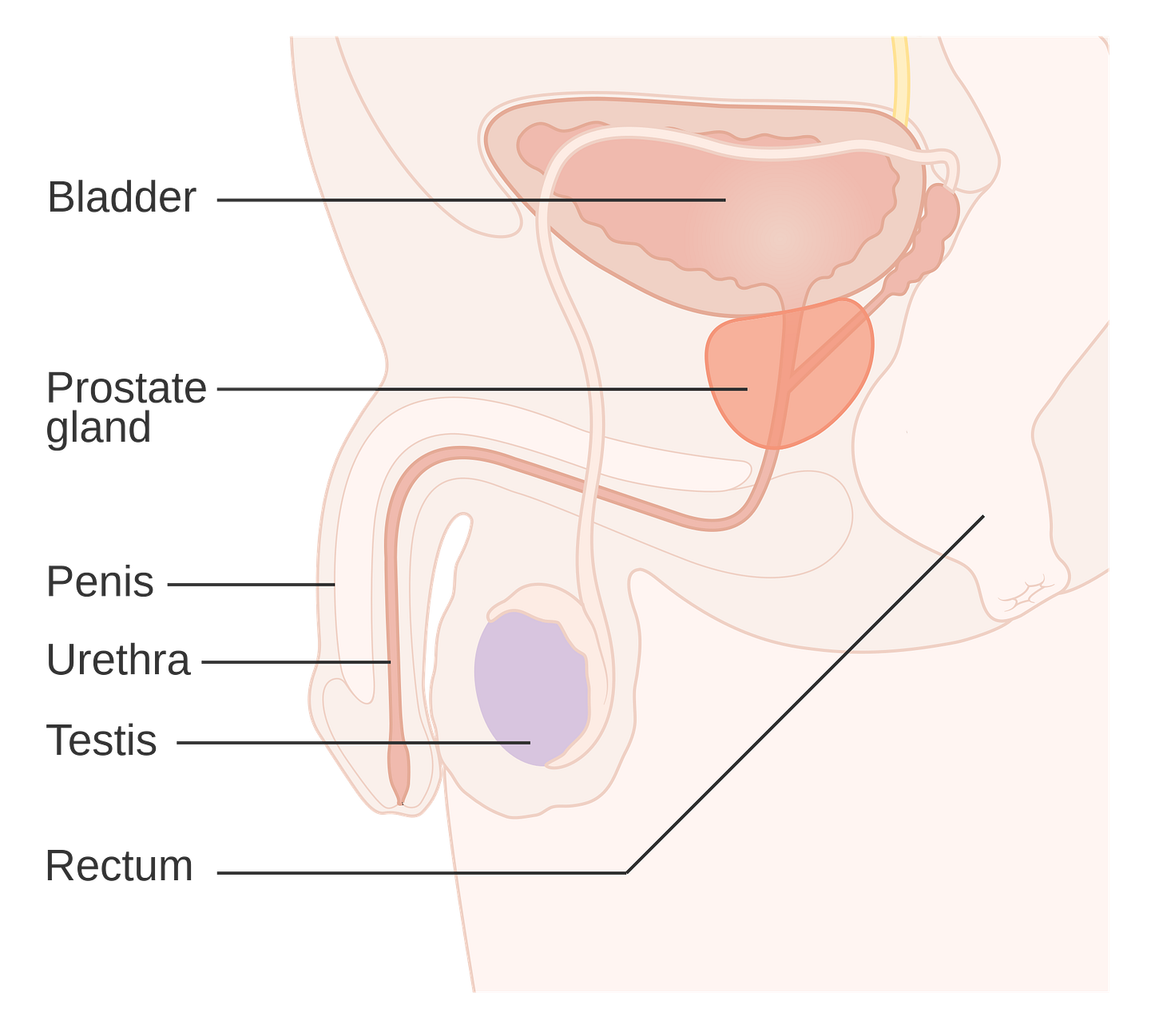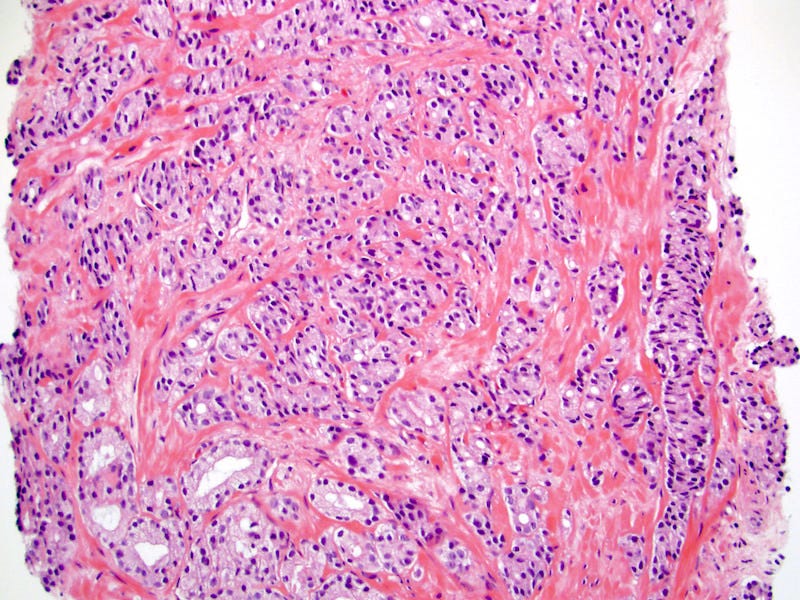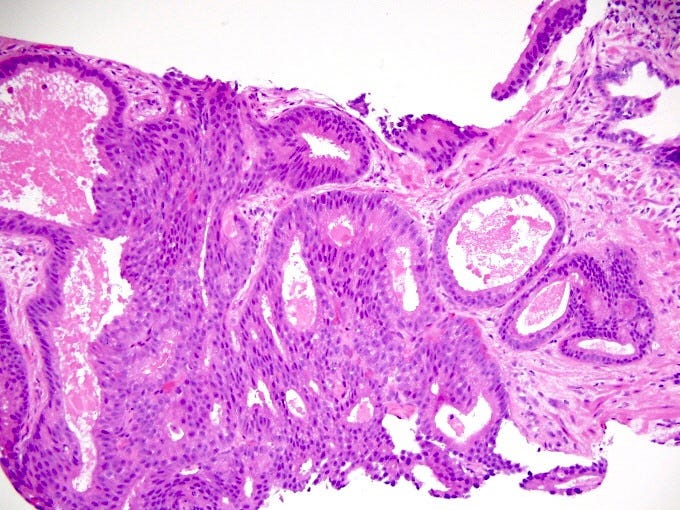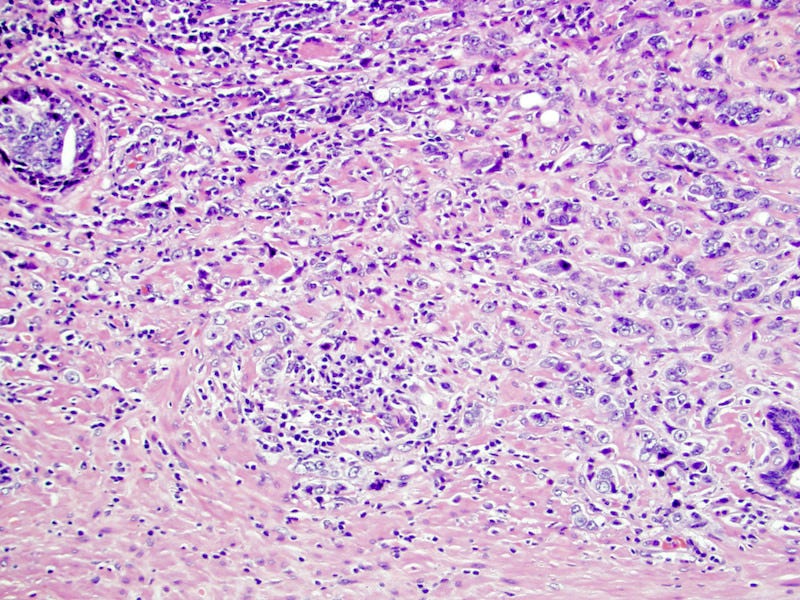I am now posting interesting cancer images, often from PathologyOutlines.com, the free online pathology textbook that I own. Click on the links to see the complete topic with its authors and editors.
Prostate cancer is the #2 cause of cancer in U.S. men after skin cancer, with a projected 288,300 cases in 2023. However, most men actually die with prostate cancer not due to it because (a) it is typically discovered early, (b) it is not as aggressive as other cancers and (c) treatment is usually effective, with an overall 5 year survival rate of 97%. Even so, it is the #2 cause of cancer death in U.S. men (after lung cancer), with 34,700 projected deaths in 2023. Women do not have prostate glands but have Skene’s glands around the urethra with some properties similar to the prostate, but they only rarely develop cancer.
Where is the prostate?
The prostate rests on the bladder, which is why an enlarged prostate, whether due to benign hyperplasia or cancer, may cause problems with urination. It is adjacent to the rectum, which is why transrectal biopsies are performed. Image source: Wikipedia
The images below are of prostate adenocarcinoma, the most common type of prostate cancer.
Prostate cancer typically appears yellow and firm, compared to the tan, soft normal prostate:
Source: PathologyOutlines.com. BPH is benign nodular hyperplasia, a common cause of an enlarged prostate gland.
Source: University of Washington. The cancer is in the lower right of the specimen and is yellow, compared to the tan color of the normal prostate.
Prostate cancer is assigned a Gleason grade, which predicts how aggressive the tumor will be. Gleason grades are pattern 3 (well formed glands, relatively nonaggressive), pattern 4 (increasingly complicated glandular proliferations) or pattern 5 (almost no glandular differentiation, the most aggressive).
Gleason pattern 3 cancer. The glands are relatively uniform and distinct. Most glands are separated from each other by stroma.
Gleason pattern 4 cancer: The glands are fused together without intervening stroma. These cancers are typically more aggressive than pattern 3 cancers.
Gleason pattern 4 cancer. This is another type of Gleason pattern 4 cancer that has a sieve-like or cribriform arrangement. Although it looks different from the Gleason pattern 4 cancer above, both types tend to have similar clinical behavior.
Gleason pattern 5 cancer. This is the most aggressive pattern. The cancer cells appear as single cells and not as part of a gland.
Index to Nat’s Substack articles
If you like these essays, please share them with others.
Follow me at Substack or LinkedIn or through my Curing Cancer Newsletter .
Follow our Curing Cancer Network on LinkedIn and Twitter. Twice a week we post interesting cancer related images of malignancies with diagnoses.
Latest versions of our cancer related documents:
Strategic plan to substantially reduce cancer deaths
American Code Against Cancer (how you can prevent cancer)
Email me at Nat@PathologyOutlines.com - unfortunately, I cannot provide medical advice.
I also publish Notes at https://substack.com/notes, and would love for you to join me there! Subscribers will automatically see my notes. Feel free to like, reply, or share them around!









